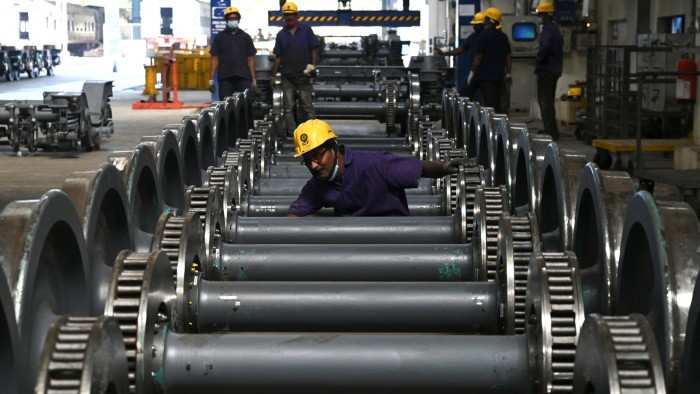Can India reverse its manufacturing failure?

Stay informed with free updates
Simply sign up to the Indian business & finance myFT Digest — delivered directly to your inbox.
The writer is senior fellow, Peterson Institute for International Economics, former chief economic adviser to the Indian government and adviser to the government of Tamil Nadu
India’s rise as a major economy has long been held back by its failure to develop a robust manufacturing sector. The share of manufacturing in GDP has remained stubbornly low, even declining over the past decade despite the government’s enormous subsidy programme to encourage firms to “Make in India”. Can this failure be reversed, given the opportunity created by the stampede of capital away from China?
There are glimmers of hope. One state in southern India — Tamil Nadu — is experiencing a manufacturing boom, attracting the likes of Cisco, Corning, Foxconn, Ford, Google, Tata Electronics and Tata Jaguar Land Rover, and Nike suppliers. These investments are integrating India into global supply chains for electronics, automotives and footwear. What is the secret to its success?
There’s scope. The state’s manufacturing investments encompass a much wider range than elsewhere in India, notably including labour-intensive activities. This is puzzling, since Tamil Nadu is among the richest states in the country. So how can it attract labour-intensive manufacturing while much poorer states cannot? Essentially, because factories have been willing to tap pools of lower-wage workers, such as migrants from other Indian states and women. In fact, 40 per cent of all women employed in factories in India are in Tamil Nadu.
Then there’s scale. Several of the new projects will provide employment in the tens of thousands. This is astonishing in a country where the median firm in labour-intensive industries employs just 21 workers, making it too small to be globally competitive.
Tamil Nadu — unlike India more generally — has also created the perception that it is a relatively easy place to do business. The state has long had a well-developed educational system, churning out hundreds of thousands of engineering graduates every year. This had made it the country’s manufacturing powerhouse, especially in automobiles and auto parts, which attracted considerable FDI in the boom years of the noughties. In addition, it offers generous incentives to investors.
But such incentives are available throughout India. The state’s talented engineers could be employed elsewhere. In Tamil Nadu, however, the state government has also grasped the critical importance of minimising risks to investors. There is a political consensus that once investors set up shop, they should not be subject to policy reversals, neglect, or discrimination.
Two examples are illustrative. In 2021, a food poisoning incident at an electronics plant seemed poised to become a full-scale political incident. The government swung into action, working with both capital and labour. It helped the victims speedily, thereby ensuring minimal operational disruption for the employer, and ensured that safety standards were upgraded.
Also in 2021, Ford announced it needed to shut production in the state. The Tamil Nadu government recognised market realities and helped Ford exit by resolving complex labour and land issues. That experience convinced Ford that risks of doing business there were low. So when the company decided this year to make a new investment in India, it again chose the southern state. The concept that easy exits incentivise enthusiastic entry has not been easy for Indian policymakers to grasp.
If India is to develop its manufacturing sector, this Tamil Nadu experience must be replicated in the poorer, populous heartland states of Uttar Pradesh, Bihar, Rajasthan and Madhya Pradesh, with their cheaper labour pools. To be sure, the governance challenges will be immense and India’s geopolitical window will not remain open forever. But the model is there for emulation.
Josh Felman of Principal JH Consulting contributed to this article
#India #reverse #manufacturing #failure




